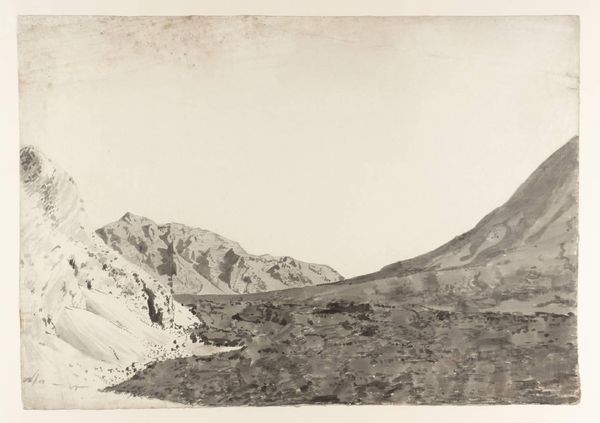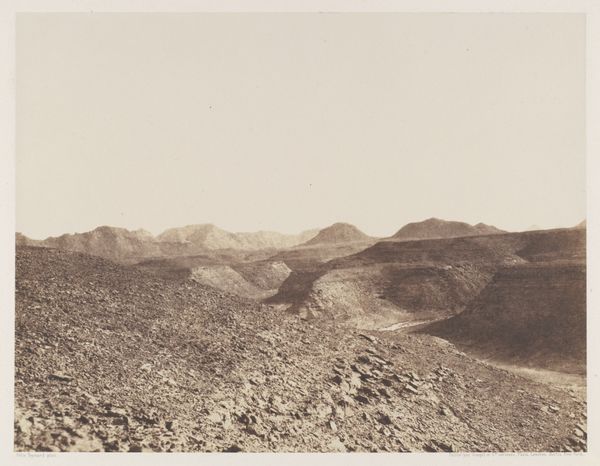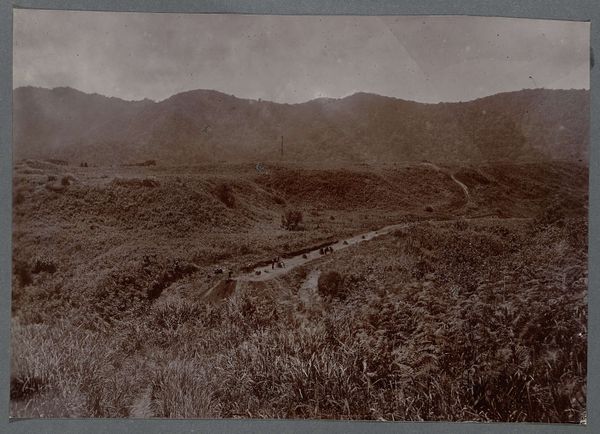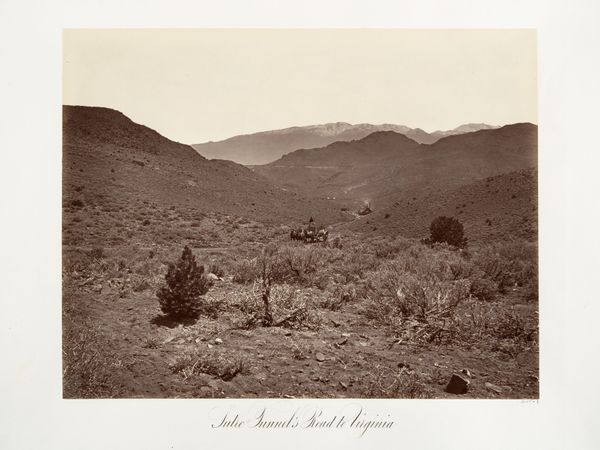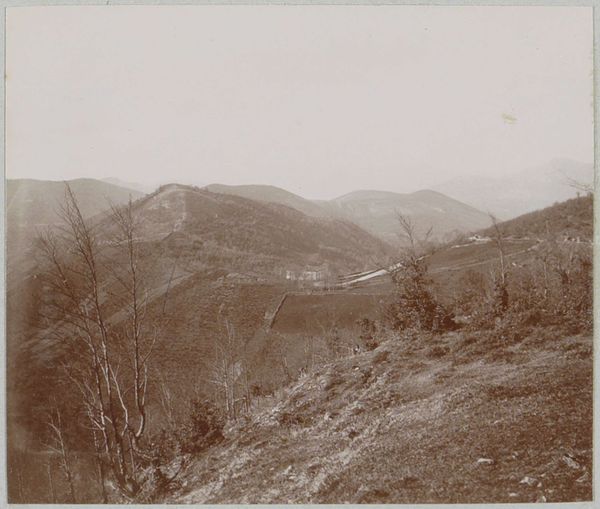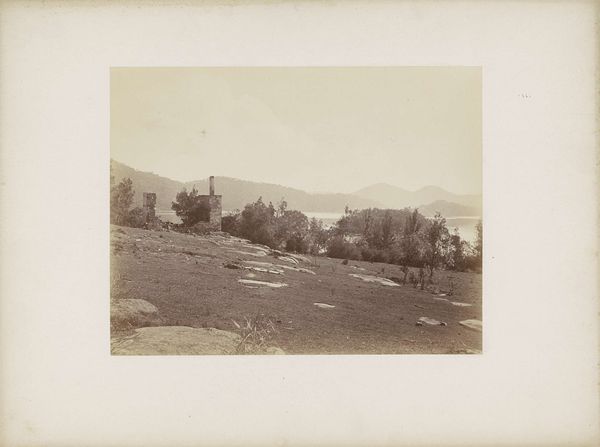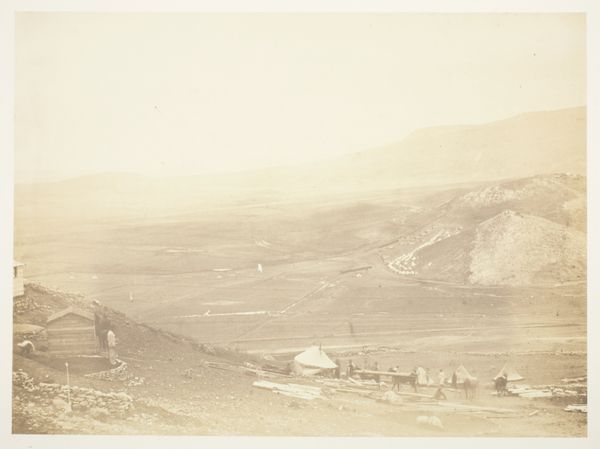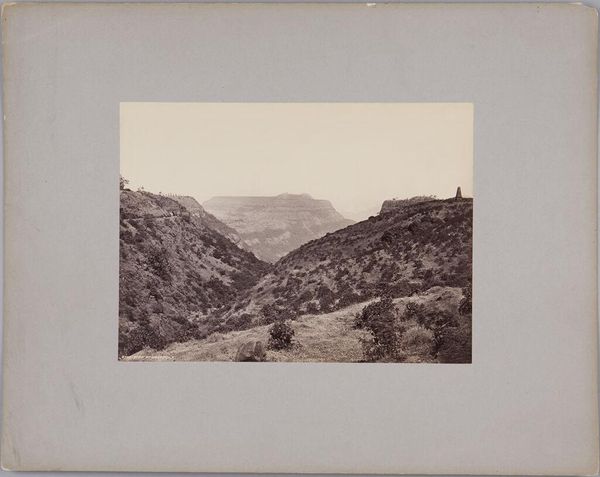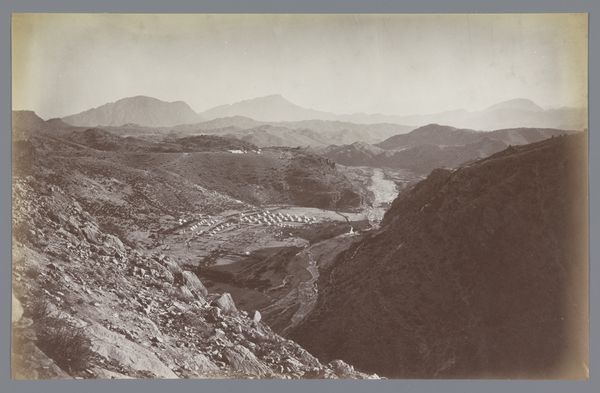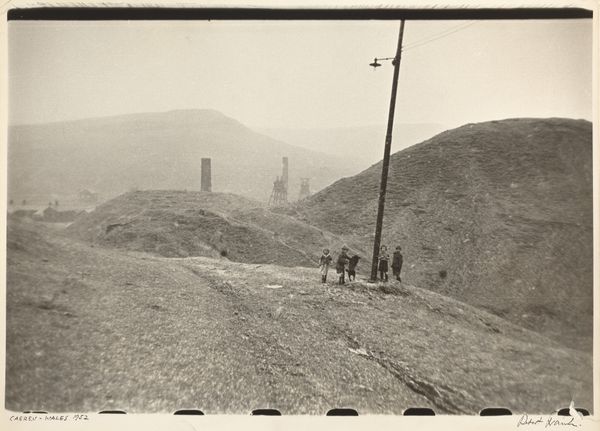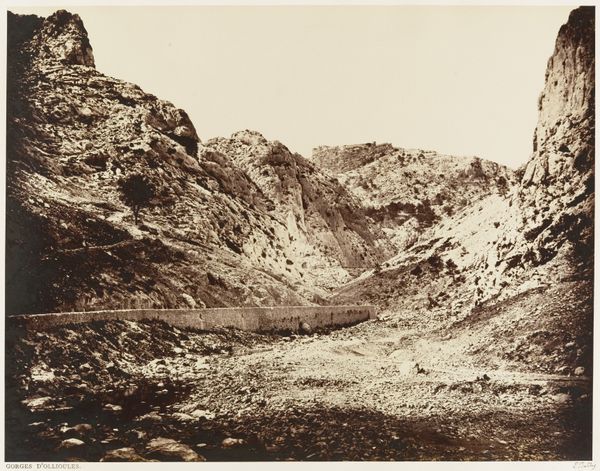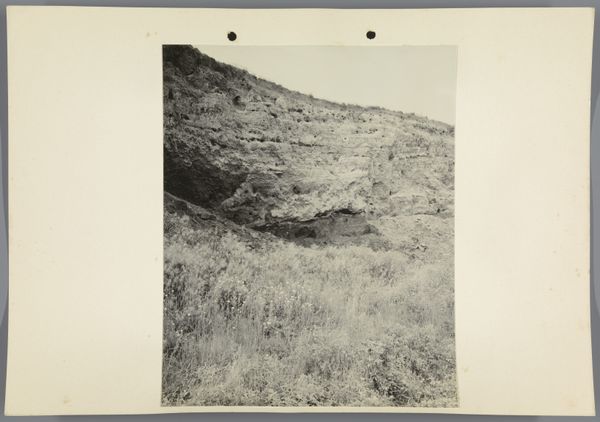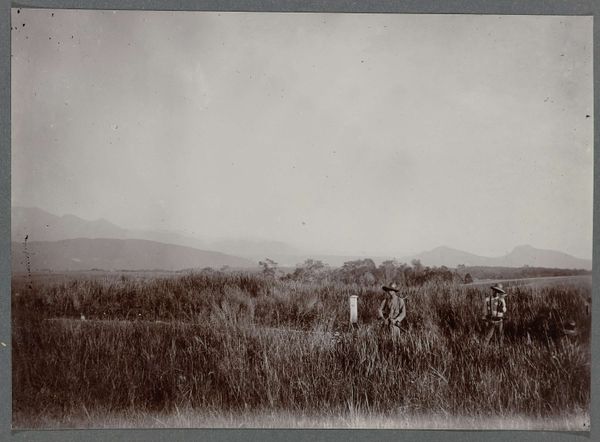
print, photography, gelatin-silver-print, albumen-print
# print
#
landscape
#
photography
#
gelatin-silver-print
#
hudson-river-school
#
albumen-print
Copyright: Public Domain
Curator: I'm struck by the loneliness conveyed in this print, despite the industrious activity implied. Editor: It is quite austere. This albumen print, taken in 1875, is titled "Sutro Tunnel Shaft No. 3" by Carleton Watkins. It captures a crucial piece of mining infrastructure in the American West. Curator: Immediately, I notice the muted tones, which seem to embody the grit and unforgiving nature of the landscape, and of course the labor involved. Even without people dominating the composition, the symbolism of man's intrusion is palpable. The little building, overshadowed, seems very vulnerable, a tiny emblem of human endeavour. Editor: Watkins masterfully captures the relationship between industry and environment here. The Sutro Tunnel was a significant feat of engineering designed to drain water and improve ventilation for the Comstock Lode mines. Watkins presents it not just as industry, but as a statement of Manifest Destiny. Curator: I see a tension here between exploitation and awe. It feels like Watkins wants to both document the engineering and portray it in the context of nature’s sublime grandeur. He presents not just industry, but also hints at the spiritual quest connected with the American West, the belief of conquering obstacles. The lone building takes on almost ecclesiastical implications. Editor: That's an astute observation. Photography, like landscape painting, was deeply embedded in that ideology, and Watkins skillfully presents that to the public. Museums and galleries used photographs like this one to advance settlement and expansion ideals. This view of technological innovation as progress obscures the impact it had on the people and the landscape. Curator: But maybe, if you permit a contrarian view, this photographic record permits a later society to pause and reflect on the cost of such ambitions. After all, our symbols change over time and take on very diverse associations. Editor: I agree. Looking back, it certainly invites a re-evaluation. An image is never fixed in its socio-political interpretation. Thanks to art historians and the Iconographers for questioning them. Curator: Exactly, thanks to historians for offering insight into those contextual frameworks. It highlights the continued impact of historical images.
Comments
No comments
Be the first to comment and join the conversation on the ultimate creative platform.

